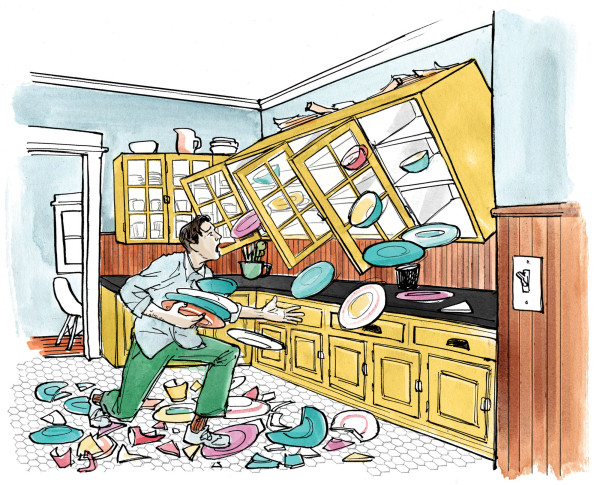
Fastening cabinets to plaster-covered brick walls embedding anchors into the wall, then aligning the attachment screws with the anchors.
Brett Affrunti
The previous owner of our 1870s Queen Anne Victorian house had the good taste to order custom, period-look cabinets for the kitchen. But apparently he didn’t do such a great job with installation of the wall-hung cabinets. We came home one day to find a bank of upper cabinets at full tilt, with dishes sliding out, falling and smashing on the floor. It created quite a mess! —Jim Sterling
The Fix
Kitchen cabinets are designed to carry a lot of weight, but they must be securely fastened into wall studs to ensure that a catastrophe like yours doesn’t happen. There are three potential reasons why your cabinets fell. Either the cabinets weren’t fastened to the wall studs, the fasteners were inadequate for the task, or you have no studs at all—just a brick wall covered with plaster.
In newer homes, the sturdy 2x4s or 2x6s used to frame up walls occur at regular 16″ intervals in order to support uniform 4′ x 8′ sections of drywall. In older frame-construction homes, however, studs can be as little as 12″ or as much as 24″ apart. Spacing for wall studs wasn’t as critical in homes where the walls were covered with lath and plaster.
Since the wall studs in a 150-year-old home may not occur at standard intervals, use a stud finder to locate them. (If you discover you have brick or masonry walls, see below.) To securely refasten the cabinets, do not use drywall screws! Use cabinet screws—also known as cabinet-hanging, washer-head, or powerhead screws. Use #10 wood screws that are at least 3″ long, such as the 3 /” cabinet screws from GRK. Anything shorter, and you risk not reaching the stud through the lath and plaster. You want the screw to penetrate the stud by about 1 ¼”. If the cabinets themselves are particularly heavy, fasten them together with fine-threaded, #8 trim-head screws that are 2 ¼” long.
Fastening cabinets to plaster-covered brick walls requires embedding anchors into the wall, then aligning the attachment screws with the anchors. This will go a lot more smoothly if you have an assistant, or better yet, hire a pro to do the work.







